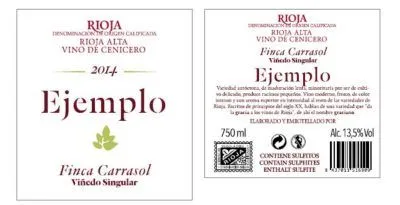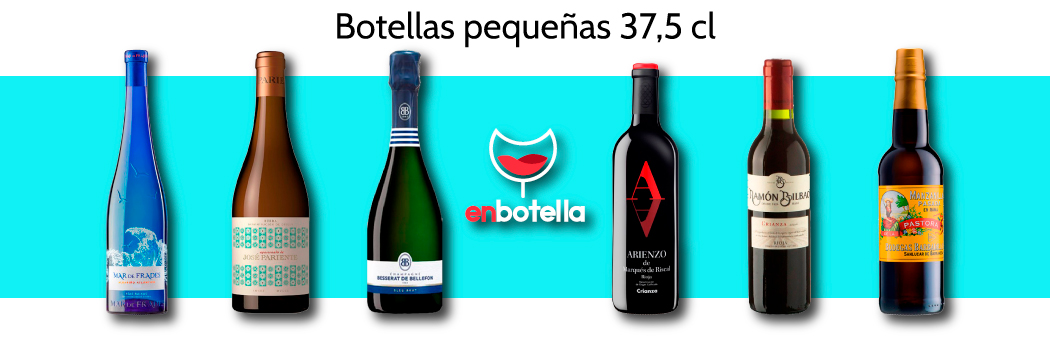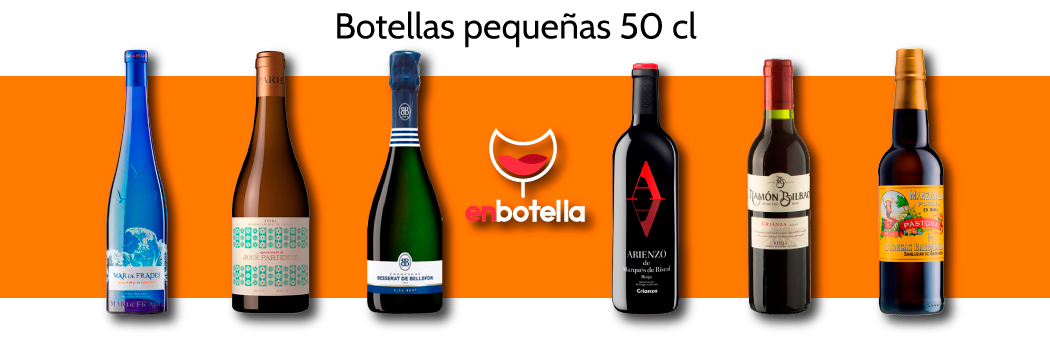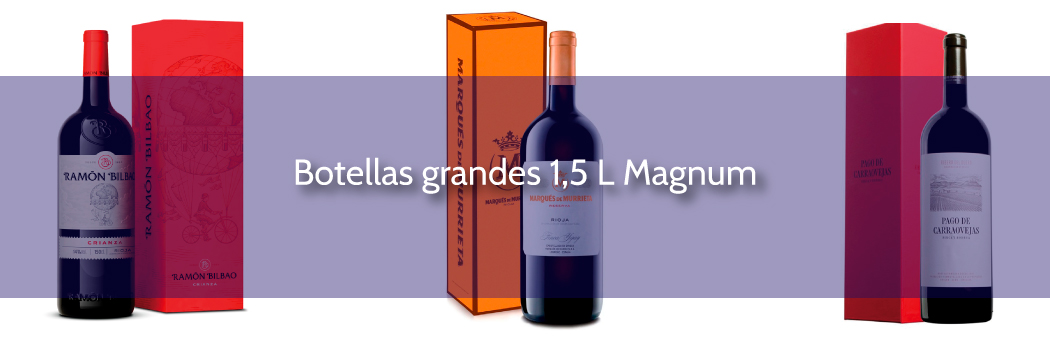Rioja user level labelling What is a Reserva?
We have just launched a fantastic selection pack of Rioja Reservas and as usual many friends are asking themselves what is the difference between a Reserva and a Gran Reserva (among other reasonable doubts). The ACIV (Asociacion de Consumidores Inseguros de Vino) recently published the main reasons for not asking these questions more often in relation to Rioja labels:
-Looking like you have no idea about wine. (Main reason among those surveyed)
-Listening to an explanation from someone who knows a lot and explains it to you as if you know a lot, or want to know a lot.
Here today we propose to tell you briefly what you need to know about Rioja labelling after the latest changes in the Rioja Qualified Designation of Origin.
Who and what exactly regulates the world of labelling.
In the world of food in general and wine in particular, we are very careful to know where what we eat and drink comes from, not only for obvious health reasons, but also to try to protect the identities of the origins from which the food comes. The concept of the protection of origin seeks that in its most primary objective, whether in the form of a Denomination of Origin or a Protected Geographical Indication for example (or more complex acronyms such as V.C.P.R.D. which indicates quality wines produced in a certain region AKA made in Europe).
Without going into all the organisational forms and the different levels of "quality", each appellation or indication has its own body (Regulatory Council) that defines the limitations, conditions, possible categorisations within each area and of course the way in which the product must be communicated and presented to the consumer: the labels. All this is defined in the Pliegos de Condiciones of each appellation. It is not a very agile reading but quite interesting (The Silmarillion style by J.R.R. Tolkien), we leave here that of the Rioja Qualified Designation of Origin in case you get the itch.
As I said, it is the Control Board, in this case, the Control Board of the Designation, through its specifications, which regulates the container and content and therefore, which says what must appear on the label and based on what criteria.
Before we start with the different Rioja labels, let's summarise what is implied just by the fact that it is DOCa Rioja
What's new on the Rioja labels
First of all, let's start with a simple but necessary disambiguation. When we talk about the Denominación de Origen Calificada Rioja (DOCa from now on) we are legally talking about a supra-autonomic denomination, which means that we are not strictly speaking about La Rioja as an Autonomous Community but about a geographical unit that shares territory with Navarre and the Basque Country.
This said, I would like to take the opportunity to make another clarification, DOCa (Qualified) is not strictly the same as DO (Denominación de Origen a secas). In Spain there are only two authorised DOCa, Rioja, as mentioned above, and Priorat, in the province of Tarragona. In the ranking of protected designations or indications, it would be above the DO and above the Vino de Pago. But be careful, this does not mean that some wines are necessarily better than others, they simply comply with certain regulations.
Today we have to understand that in Rioja there are, or can coexist, two conceptual lines of information on labels: the geographical origin and the winemaking process (especially with regard to ageing).
For some time now there has been an answer to one of the major doubts that the Rioja brand presented for many consumers: within more than 63,590 hectares of vineyards spread over the 3 major geographical units, there should be a space for the winemaker to tell us something more specific about which Rioja his Rioja comes from.
The most immediate solution that can give us easily digestible information is whether the wine comes from Rioja Alavesa, Rioja Alta or Rioja Oriental. Although it is also true that if we don't know what it means to come from one area or another, it doesn't matter. To sum up, this classification tries to define geographically a kind of style that is found in each area, derived from climatic and soil issues above all.
So the Alavesa region has more Atlantic influence and more calcareous soils, the eastern region (the Rioja Baja) has more Mediterranean influence and its wines can have a higher alcohol content, being a drier and warmer area, and be more direct and somewhat more immediate, and the Rioja Alta (or western region to put it in the same magnitude) would be climatically halfway, with more rainfall and higher altitude and a mixture of clay-ferrous and clay-limestone soils mostly.
In addition to the sub-zone, within Rioja the regulations now allow both the designation of the Municipality, if it is within the authorised municipalities and the wine is produced entirely in the same, and the Single Vineyard, which is defined as follows in the specifications:
"The 'singular vineyard' is a geographical entity that is smaller than the municipal area, located in the territory protected by the 'Rioja' Qualified Designation of Origin and identified with a name. It consists of a spot or rural site with its own agro-geological and climatological characteristics that differentiate and distinguish it from others in the surrounding area, from which wines with unique features and qualities are obtained.

The classic codes: the ABC of Rioja
With the question of the new labelling that you can find with respect to the geographical specifications within the DOCa clarified, let's move on to the more conventional concepts of classification: those that have to do with the elaboration but above all with the ageing process.
Joven (or rather generic), Crianza, Reserva and Gran Reserva. It seems simple (and it is) but it is important to be clear about some concepts.
These four types of strips that you can find on the back of the bottles are guarantee marks that certify the origin of the grapes and the minimum ageing times, but we should not pigeonhole them in a sort of hierarchy of quality. A mediocre wine made by a bad oenologist can age for a long time in wood, be marketed with a Gran Reserva label and not be qualitatively better than a wine with a Crianza label. That will depend on many factors that do not fit in the wine strips.
But they do give us information a priori about the style of wine we are going to find when we open the bottle just by reading the label, not in vain the Regulatory Council has some organoleptic parameters described for each style: visual, olfactory and gustatory. And a sample must more or less fit these parameters in order to be awarded the label before being put on the market.
Author's note: in another post we will talk about what we leave out by trying to corset styles in appellations, having wines that coming from the same area cannot qualify for the label because they are outside some organoleptic spectrum.
Let's go with the four styles. The most pipiolo of the class, what we have always called Joven o Genérico according to the DOCa. Nowadays we simply call it generic to avoid any misunderstanding. This label assures us the origin of Rioja and the vintage, and does not require any minimum ageing, which means that a wine with this label could have been aged in barrels, or cement or nothing, but it does not have any obligation. Wines that do not fit with any of the requirements of the other bands can also end up with this band. In any case the style would be the youngest, the one that looks for more predominance of fruit over wood, and more immediate in time.
Breeding. This is where the minimum conditions begin. In this case the wine cannot be released onto the market before 2 calendar years. And of these 2 years of ageing, at least 1 year must be in barrels. It is important to understand that these terms vary in each case between red wines on the one hand, and whites and rosés on the other. In the case of the ageing period for whites and rosés, it is reduced to 18 months of ageing, of which at least 6 months will be in barrels. Perhaps the most consumed style nowadays because of the balance between fruit and a little more packaging, structure and aromatic notes and flavours provided by the wood.
Reserve. In red wines we are talking about a minimum of 3 years before reaching the market, of which at least 1 year must remain in oak. In whites and rosés we are talking about 2 years and 6 months in oak barrels. Wines ideally selected for their greater ageing capacity, wines that require a little more tannin and acidity to evolve well and which have always been the emblem of Rioja in the world. Less suitable for those of you who are not interested in the more typical notes of wood, toast and spices.
Gran Reserva. The wines with the highest ageing time requirements with a minimum of 5 years before seeing the light of day, at least 24 months of wood and also 24 months in the bottle to reach the market.
In the case of whites and rosés, where we find few examples of legendary houses, 4 years of ageing with at least 6 months in oak. In this case we are talking about wines that require particular parameters to be able to withstand not only the long ageing that they legally require, but also the many years that they can and must wait to be opened. In the best examples, complex and deep wines, with a skeleton built by acidity and tannin, sculpted by time and turned into fine wines that amaze anyone even decades after the winemaker turns the grapes into wine.
We know that sometimes the world of labels, appellations and so on is a mess, but don't be discouraged, the worst thing that can happen is that you drink a bottle that is not exactly what you expected. But to learn to lose. And here, even if you lose, you win. XD
If you want more info about labelling, regulations, areas or styles of Rioja, I recommend you to visit the official website and if you want to get the honours, try riojawineacademy, a proposal for consumers and professionals to learn everything you need to know about Rioja.



